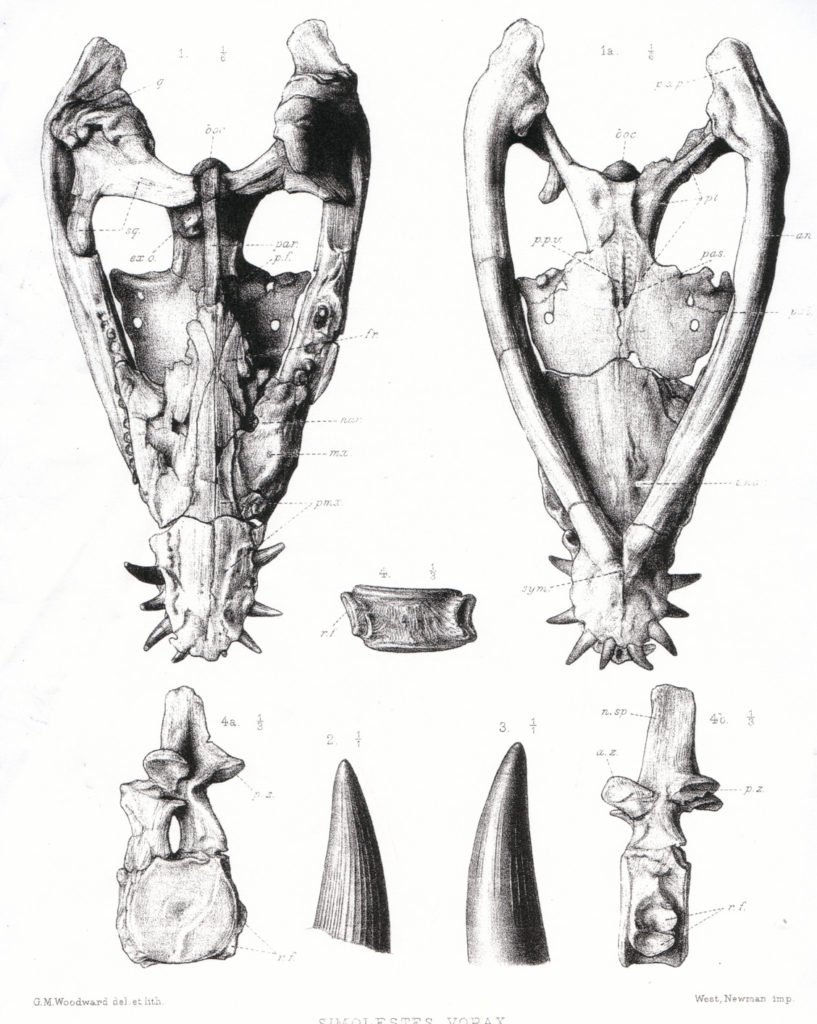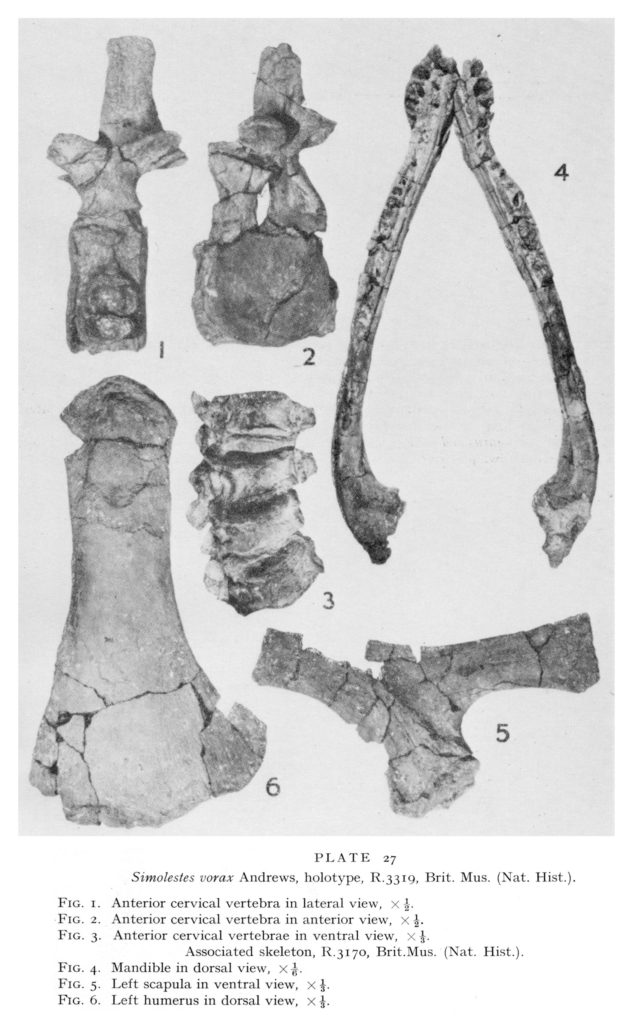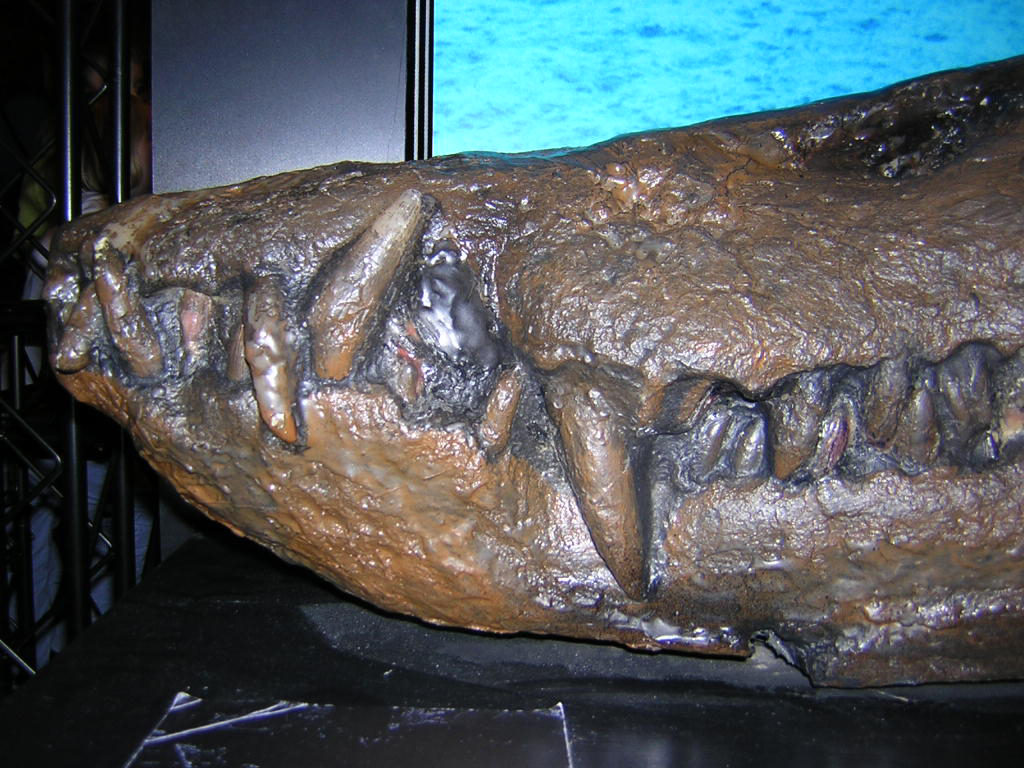Simolestes

S. vorax
Simolestes has variously been allied with the Pliosauridae and the Rhomaleosauridae. The most noticeable difference between Simolestes and the other pliosaur taxa from the Oxford Clay (Liopleurodon, Peloneustes, Pachycostasaurus), is its much shorter snout and mandibular symphysis, a character is shares with the Rhomaleosauridae. However, this is probably a convergent character. Older descriptions of this taxon note the spatulate symphysis and premaxilla with its “rosette” of protruding teeth. However, more recently discovered specimens of Simolestes (such as the Peterborough specimen figured below) show that this character is a taphonomic artefact – the holotype specimen was crushed during fossilisation causing the teeth to splay out. In life, the teeth of Simolestes and other pliosaurs were positioned almost vertically in the jaws in life.
Simolestes novackianus was named by von Huene (1938) based on a mandible from Ethiopia. Tarlo (1960) noted that it differed only in the details of the tooth ornamentation but accepted its validity. Later, Bardet and Hua (1996) recognised that Simolestes nowackianus is actually a teleosaurid crocodile, and the species therefore does not belong to Simolestes.
Bardet et al. (1991) referred another species to Simolestes in 1991. S. indicus is from India and was originally described by Lydekker in 1877 who referred it to Plesiosaurus and later to ‘Thaumatosaurus‘ (=Rhomaleosaurus). S. indicus differs from other species of Simolestes in having equally sized tooth alveoli in the symphysis (in other species alveoli 3 and 4 are enlarged) and a “peculiar symphyseal protruberance” (Bardet et al. 1991).
The species Simolestes keileni was introduced by Godefroit (1994) for a fragmentary specimen from the Bajocian of France. This species differs from other species of Simolestes and was eventually allocated to a new genus Lorrainosaurus by Sachs et al. (2023).
The type specimen of Simolestes is an almost complete, but crushed, skeleton in the Natural History Museum, London (NHMUK R. 3319).
Material referred to Simolestes is known from the Callovian, Oxford Clay, Peterborough, England; from the Callovian and Bajocian of France, and from the Tithonian of India.






